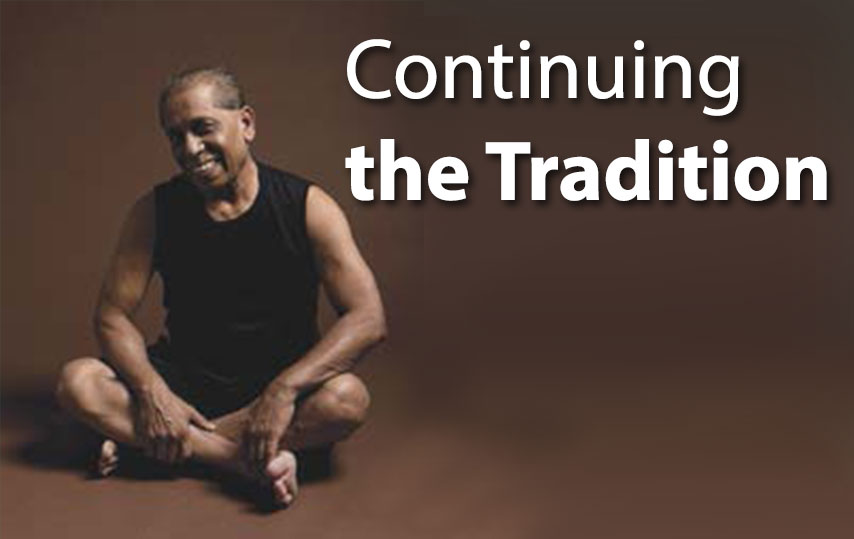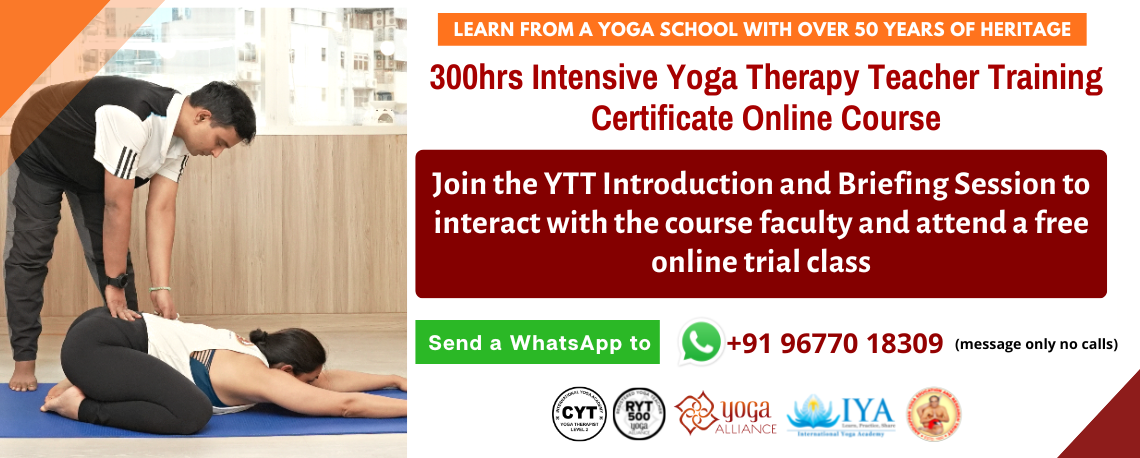The Practice
Asana: When did you start your practice? Was that a requirement within the family? What was the most memorable moment when you and your sister took private classes with your father?
Manju: I start practising yoga at the age of 7. It wasn’t a requirement of the family; it is in our blood. It was fun taking private lessons with my father. Every time if we did well, my father would have a big smile on his face. This is beautiful and that is my memory.
Asana: When you started the practice, have you always thought of following your father’s footsteps to teach and promote Ashtanga Vinyasa?
Manju: Yes I just wanted to follow the footsteps of my father who is also my teacher. I consider it a great honour to be his son.
Asana: You mentioned that Baddha Konasana was a challenging asana for you as a kid. How did you overcome it? What would you advise students with similar challenge of achieving a pose?
Manju: Baddha Konasana was a nightmare to me. I tried to avoid doing it and found excuse skipping the asana during our practice. Yet, my father would wait for me to continue the practice! Nonetheless, at the back of my mind, I must master it. Then I surrender and everything went fine. So I will say, never give up.
Asana: You stress the importance of Ashtanga (the eight limbs), not just focusing on asana. Could you share with us your near death experience which pranayama saved you? How should anyone practise pranayama for good health? Manju: In the west, people are generally so much into postures. They just concentrate on asanas only. I think they should pay more attention towards other aspects of yoga. I learnt pranayama which saved my life.
When I was about to have a heart attack at the airport in London, I felt the pain in my chest and my left arm. I did pranayama for five minutes, then saved my own life. I travelled safely back to the US and checked into the hospital. My doctor was surprised that I survived! Had I just practised asanas, I would not have been alive talking to you now. So learn pranayama; and chanting too. These are all part of Ashtanga Vinyasa yoga.
The Teaching
Asana: Why did you choose to teach in the West, but not like your family staying in Mysore?
Manju: I think the west needs more yoga than the east. Yoga needs to be shared with the universe. I want to share with everyone and that’s why I move to the west.
Asana: Having taught thousands of students around the world, what has been the biggest enjoyment for you as a teacher? What is the most challenging aspect?
Manju: My biggest enjoyment as a teacher is meeting new people. I love sharing the practice and philosophy with them. As I enjoy my teaching, I do not consider teaching a challenge. It is a choice; therefore my joy.
Asana: What are the key attractions in Ashtanga Vinyasa to you as a practitioner and teacher, and to your students?
Manju: As I mentioned, we should not just focus on the asana practice. The key attraction of the practice is being healthy and happy.
Asana: Do you believe that an Ashtanga Vinyasa teacher has to be either certified or authorised? Is the qualification an assurance of “good and proper teaching”? Manju: Yoga is a lifelong practice; it is never ending. You don’t need a certificate; you need experience and confidence. That’s all you need, not a piece of paper.
The Lifestyle
Asana: You seem to be constantly on the road. Do you have time to rest and be with your family? Where is home for you now? Do you get to go back to India at all? Manju: Yes, I spend lots of time with my family. My wife, Nancy and our multi-talented, beautiful daughter Sathu, named after her paternal Grandmother, always join me in Europe, generally in April and July. I stop going to India now because my guru (my father) is not there any more. I have decided to spend May with my family in California instead.
Asana: Do your wife and daughter also practise Ashtanga Vinyasa? Is this a family ritual?
Manju: Yes, Nancy and Sathu love practising Ashtanga Vinyasa. It is not a family ritual. We feel blessed.
Asana: You mentioned that asana is just a small part of the yoga practice. What are the key elements to be happy?
Manju: Combining asana with pranayama and chanting, that will keep you happy.
Asana: How does it feel like being famous? What is your normal day when you are not teaching?
Manju: I don’t think I am famous. I don’t want to be famous. I just want to be a fruit behind the leaves. When I am not working, I will do gardening. I have an organic garden in my house.
The Way Forward
Asana: Do you have any immediate plans, something you really wish to achieve?
Manju: I love teaching and continue to share with more people. I do not have any immediate plan I wish to achieve.

Asana: You seem to spend more time in Europe. Do you have plans to visit Asia again?
Manju: God willing. [Editor: Manju is already fully booked in 2014. The good news is that he does have a plan visiting Asia and possibly Hong Kong – in 2015!]
Asana: Do you consider yourself successful in promoting and teaching Ashtanga Vinyasa? Is there anything you wish to do to be more successful, more known etc? Manju: I am not looking forward to succeeding in anything. I am just doing my duty to the universe.
Asana: If you had to do it all over again, would you follow the same path?
Manju: You bet!


















 Other
Other